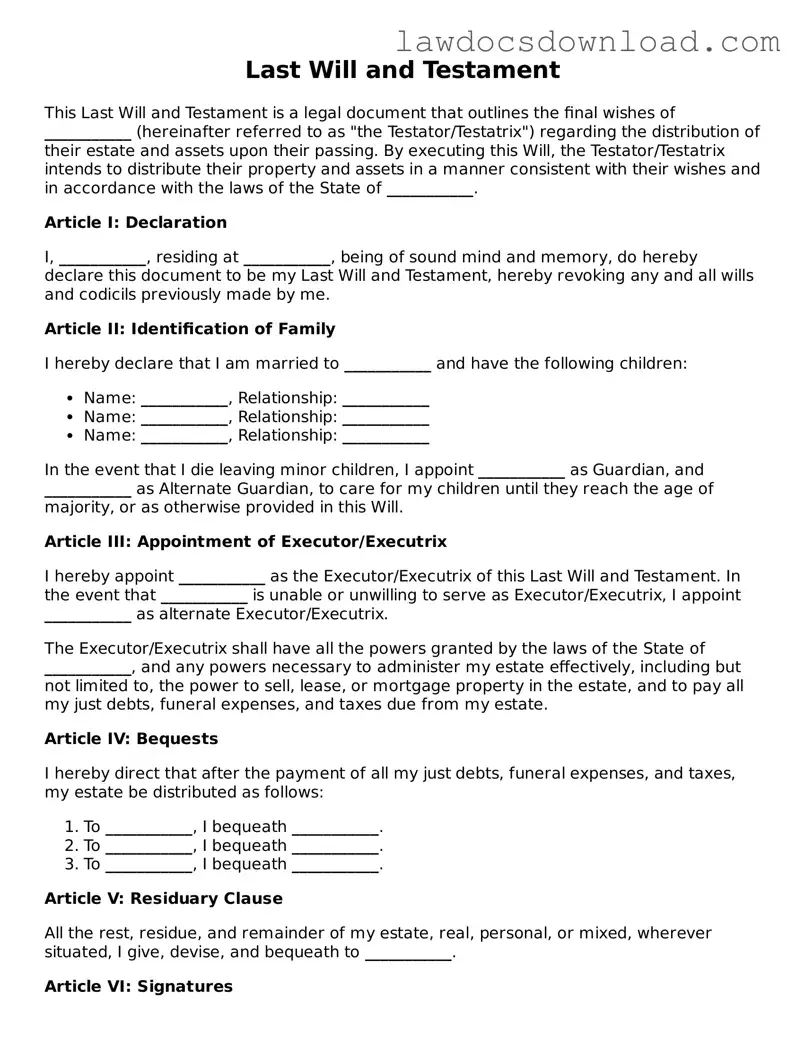Last Will and Testament
This Last Will and Testament is a legal document that outlines the final wishes of ___________ (hereinafter referred to as "the Testator/Testatrix") regarding the distribution of their estate and assets upon their passing. By executing this Will, the Testator/Testatrix intends to distribute their property and assets in a manner consistent with their wishes and in accordance with the laws of the State of ___________.
Article I: Declaration
I, ___________, residing at ___________, being of sound mind and memory, do hereby declare this document to be my Last Will and Testament, hereby revoking any and all wills and codicils previously made by me.
Article II: Identification of Family
I hereby declare that I am married to ___________ and have the following children:
- Name: ___________, Relationship: ___________
- Name: ___________, Relationship: ___________
- Name: ___________, Relationship: ___________
In the event that I die leaving minor children, I appoint ___________ as Guardian, and ___________ as Alternate Guardian, to care for my children until they reach the age of majority, or as otherwise provided in this Will.
Article III: Appointment of Executor/Executrix
I hereby appoint ___________ as the Executor/Executrix of this Last Will and Testament. In the event that ___________ is unable or unwilling to serve as Executor/Executrix, I appoint ___________ as alternate Executor/Executrix.
The Executor/Executrix shall have all the powers granted by the laws of the State of ___________, and any powers necessary to administer my estate effectively, including but not limited to, the power to sell, lease, or mortgage property in the estate, and to pay all my just debts, funeral expenses, and taxes due from my estate.
Article IV: Bequests
I hereby direct that after the payment of all my just debts, funeral expenses, and taxes, my estate be distributed as follows:
- To ___________, I bequeath ___________.
- To ___________, I bequeath ___________.
- To ___________, I bequeath ___________.
Article V: Residuary Clause
All the rest, residue, and remainder of my estate, real, personal, or mixed, wherever situated, I give, devise, and bequeath to ___________.
Article VI: Signatures
This Last Will and Testament was signed on ___________ (date), at ___________ (place), by ___________ (the Testator/Testatrix) as and for their Last Will and Testament, in the presence of us, who at their request, in their presence and in the presence of each other, have subscribed our names as witnesses thereto.
Witnessed by:
- Signature: ___________, Date: ___________, Address: ___________
- Signature: ___________, Date: ___________, Address: ___________
- Signature: ___________, Date: ___________, Address: ___________
